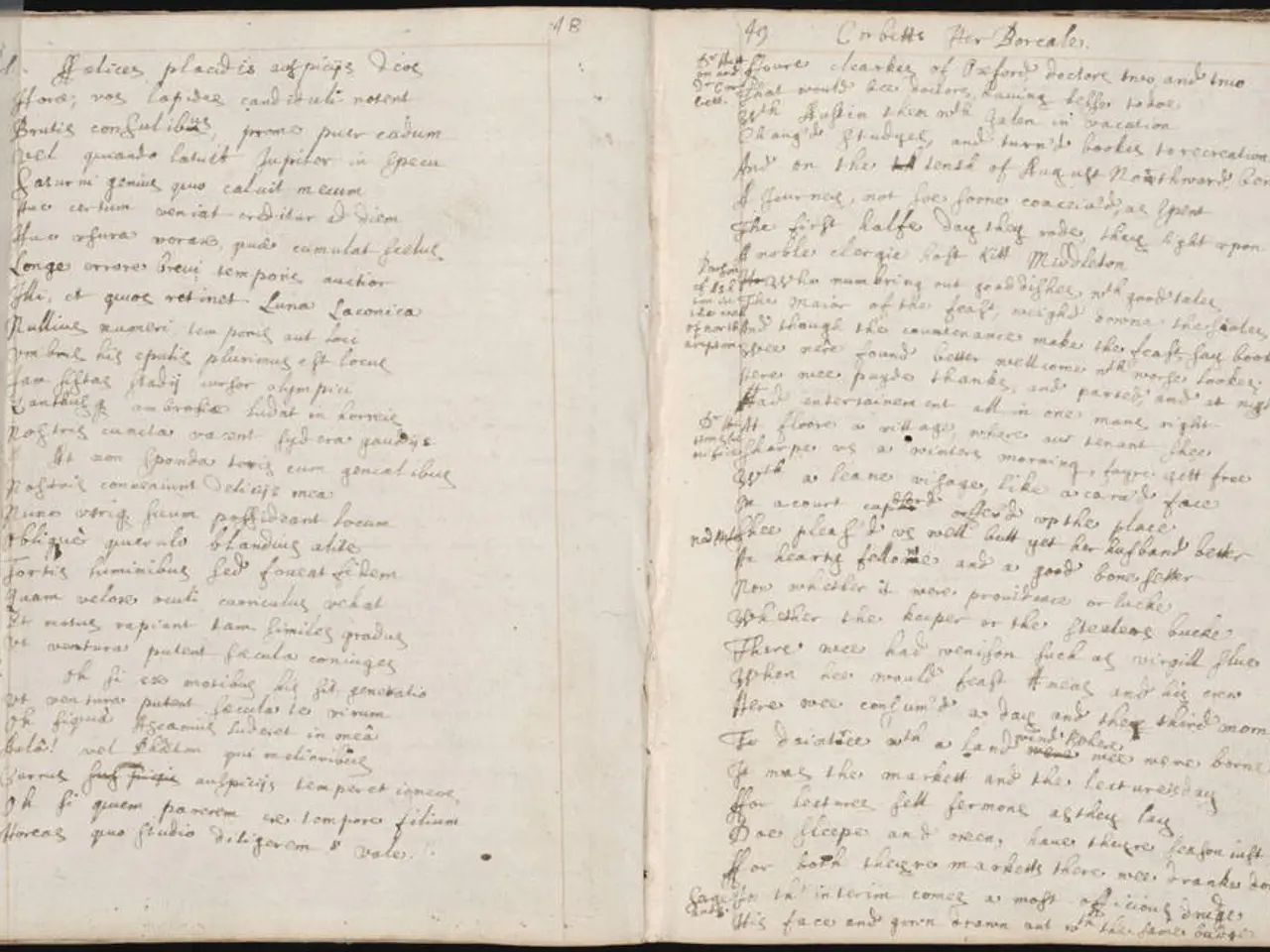Novels Categorized: Key Genres, Their Distinct Features, and Recurring Themes
In the vast landscape of literature, novels come in various types and genres, each with distinctive characteristics, themes, and examples. Here's a detailed overview of some of the most common novel genres:
**Mystery Novels** These suspenseful novels are centered around unraveling secrets or crimes, often featuring detectives or amateurs solving puzzles. Agatha Christie's *Murder on the Orient Express* is a classic example.
**Science Fiction Novels** Exploring speculative advances in science and technology, these novels question humanity's relationship to these changes. Isaac Asimov's *Foundation* series is a prime example.
**Thriller Novels** Fast-paced and filled with action and danger, thriller novels often involve espionage or crime. Gillian Flynn's *Gone Girl* is a modern thriller that keeps readers on the edge of their seats.
**Romance Novels** Focusing on emotional relationships, romance novels explore themes of love, conflict, and harmony. Jane Austen's *Pride and Prejudice* is a timeless romance novel.
**Horror Novels** Designed to elicit fear and terror, horror novels often incorporate supernatural or psychological elements. Mary Shelley's *Frankenstein* is a seminal work in the horror genre.
**Realistic Fiction Novels** Plausible events and believable characters in contemporary settings are the hallmarks of realistic fiction. *To Kill a Mockingbird* by Harper Lee is a powerful example of this genre.
**Fantasy Novels** Containing magical or supernatural elements, fantasy novels often focus on quests, battles of good versus evil, and imaginative settings. J.R.R. Tolkien's *The Lord of the Rings* is a beloved fantasy epic.
**Additional Notes** These types often overlap; for example, a novel might combine elements of mystery and fantasy. Each type can be further subdivided into numerous subgenres reflecting more specific themes or narrative styles.
**Chick Lit Novels** Typically light-hearted, humorous, and centered around female protagonists, chick lit novels offer a different perspective on contemporary life.
**Horror Novels** These novels are designed to provoke fear, dread, or terror in the reader.
**Thriller Novels** Fast-paced and filled with action and danger, thriller novels often involve danger, intrigue, and heightened emotions.
**Coming-of-Age Novels** The main theme of a coming-of-age novel is personal growth and the transition from childhood to adulthood, often focusing on self-discovery, identity, and emotional development.
**Young Adult (YA) Novels** Geared towards a young adult audience (ages 12-18), YA novels often explore themes relevant to this age group, such as identity, relationships, and self-discovery.
**Fanfic Novels** These novels are mainly stories created by fans of other books, series, or movies.
**Interactive Novels** Some novels blend the format of the novel with video games, allowing readers to choose how the story continues.
**Psychological Novels** Focusing on the internal emotions, thoughts, and conflicts of the protagonist, psychological novels delve into the human psyche.
**Magical Realism Novels** Blending magical elements with real-world settings, magical realism novels offer a unique perspective, expressing deeper emotional or cultural truths in a seamless way.
**Dystopian Novels** Set in a society that is undesirable or frightening, often with oppressive governments or a breakdown in society, dystopian novels challenge readers to reflect on society's flaws, political systems, and personal freedoms.
**Literary Fiction Novels** Focusing on character development, style, and thematic depth, literary fiction novels are often more introspective and philosophical.
**Satirical Novels** Using humor, irony, or ridicule to criticize or mock societal norms, politics, or human behavior, satirical novels offer a critique of the world around us.
**Historical Novels** Often involving real historical events and figures, historical novels provide insight into the time's culture, politics, and society.
**Autobiographical Novels** A form of memoir, often written in the first person, autobiographical novels offer a personal account of the author's life.
**Biographical Novels** Based on the life of a real person, but often fictionalized for dramatic purposes, biographical novels offer a creative interpretation of historical figures.
**Commercial Novels** Aiming for high sales, commercial novels often prioritize entertainment value over artistic merit.
**Literary Novels** Focusing on artistic creation, literary novels prioritize depth, style, and thematic exploration over entertainment value.
In all these cases, it must be taken into account that the literary genre is a resource to group and understand certain literary phenomena, and novels do not serve genres, but the other way around.
Personal growth and emotional development are major themes in coming-of-age novels, as they focus on the protagonist's transition from childhood to adulthood. Psychological novels delve deeper into the human psyche, exploring the internal emotions, thoughts, and conflicts of the characters. Education-and-self-development and entertainment can be found in interactive novels, which combine the traditional novel format with video game elements, allowing readers to choose the story's direction.




